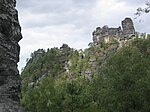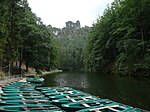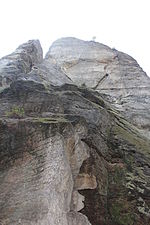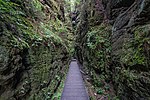Hohnstein Castle (Saxon Switzerland)
Castles in Saxon SwitzerlandHohnsteinLocal museums in GermanyMuseums in Saxony

Hohnstein Castle (German: Burg Hohnstein) is a medieval castle in the village of the same name, Hohnstein in Saxon Switzerland in the Free State of Sachsen in East Germany.
Excerpt from the Wikipedia article Hohnstein Castle (Saxon Switzerland) (License: CC BY-SA 3.0, Authors, Images).Hohnstein Castle (Saxon Switzerland)
Markt,
Geographical coordinates (GPS) Address Phone number Website External links Nearby Places Show on map
Geographical coordinates (GPS)
| Latitude | Longitude |
|---|---|
| N 50.97972 ° | E 14.10944 ° |
Address
Burg Hohnstein
Markt 1
01848 , Sachsenbergsiedlung
Saxony, Germany
Open on Google Maps










